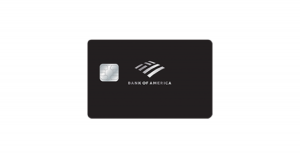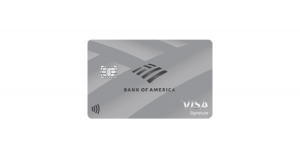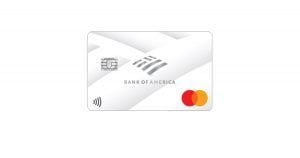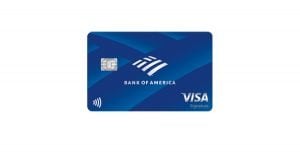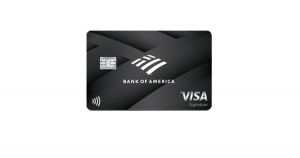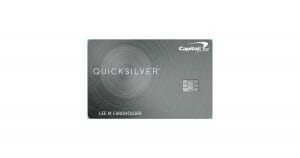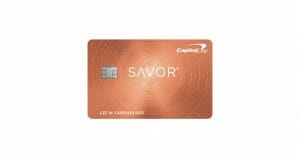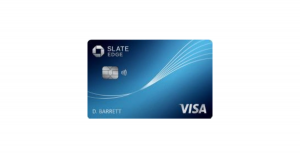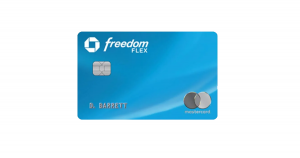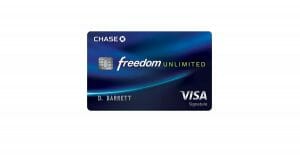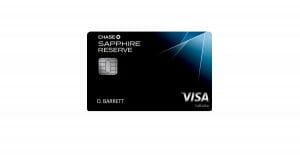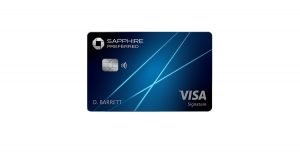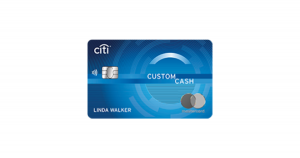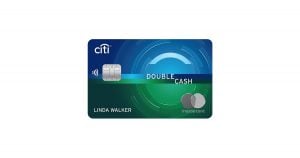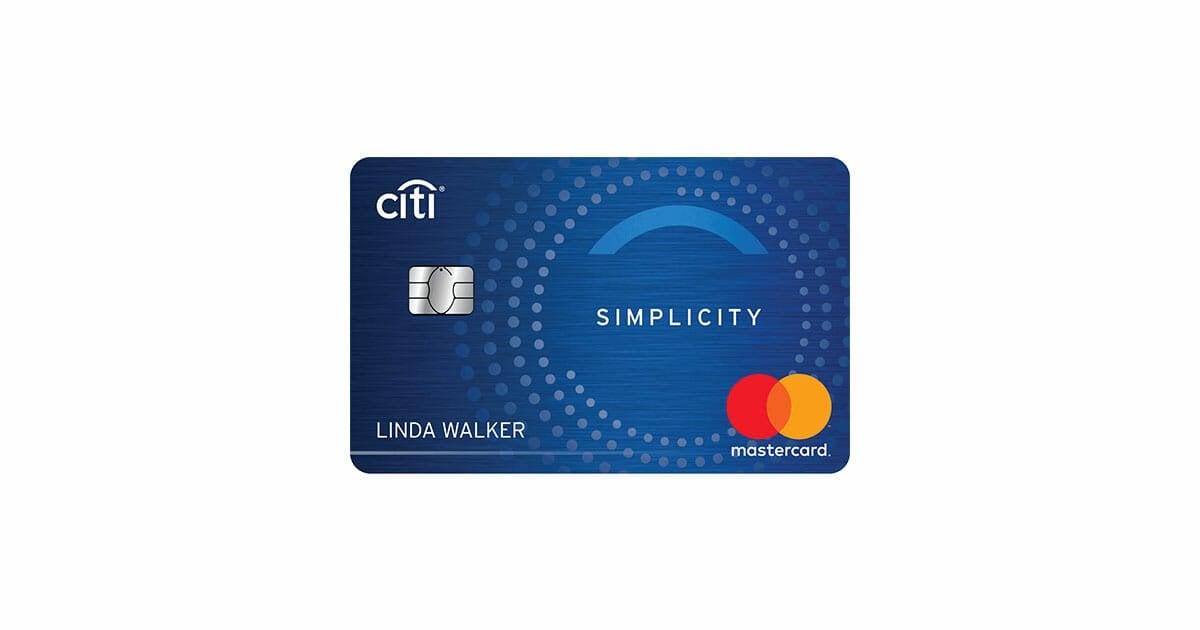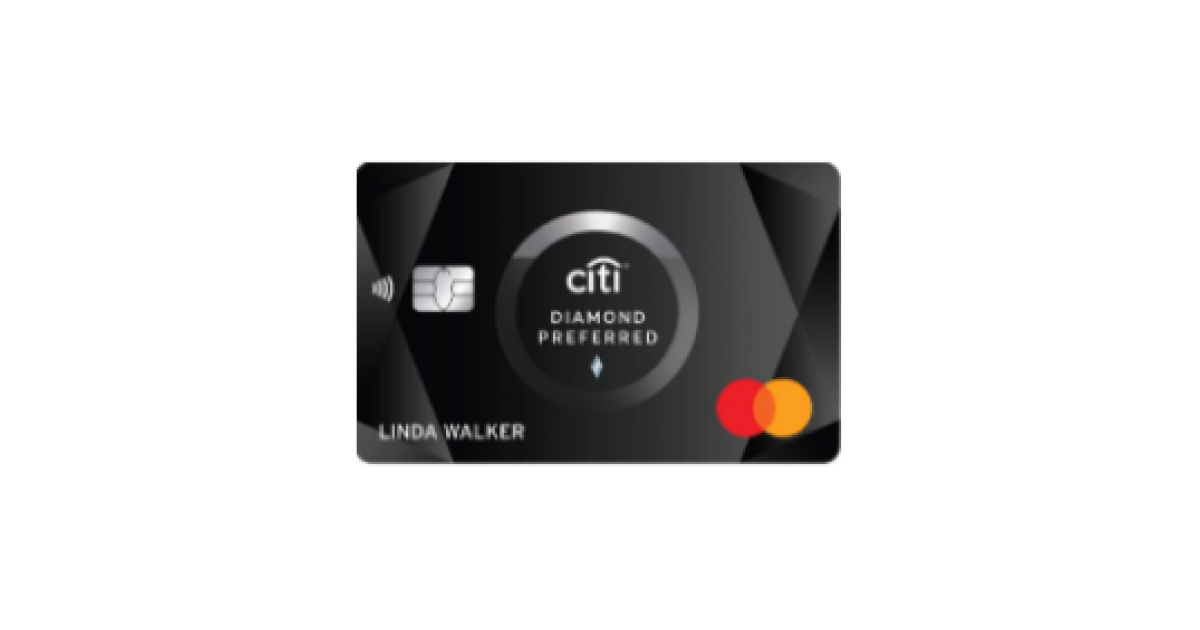If you’re looking to be the owner of a new credit card, you’ll have to apply for it. Unfortunately, issuers don’t just hand them out (and if they did, we’d be very suspicious about that). A credit card application means the issuer will check your credit report and your credit score will take a slight hit. On top of that, there’s no guarantee that you’ll be approved, and that inquiry will remain on your report for two years. Pre-qualifying, or getting a “pre-approved” or pre-screened credit card offer can help you save the credit inquiry before knowing your approval odds when applying. Here’s what you need to know about pre-qualifying for a credit card.
What is a Pre-Qualified Credit Card Offer?
Many banks offer credit card pre-qualification. When applying for a credit card, the issuer will inspect your credit report and put a small ding on your credit score. This “small ding” is known as a hard inquiry on your credit report, which means the bank has pulled your full credit report to check your suitability for the credit card.
Credit card issuers use pre-qualified or pre-approved offers to target applicants based on credit score, borrowing history, and other easily-obtainable personal information. Typically, your approval odds with pre-approved offers are good if you receive an offer and your credit profile has changed recently.
Pre-Qualified Vs. Pre-Approval Vs. Pre-Selected
In addition to being pre-qualified for a credit card, you may be “pre-approved” or “pre-screened.” The difference between these terms is small on surface-level but significant in most cases.
Pre-qualification is the commonly used term for this type of credit card offer. A pre-screened or pre-qualified credit card offer is made when the bank or card issuer invites qualified consumers to apply for their credit cards.
With pre-qualification, you approach the issuer and inquire about your eligibility for one or more credit cards. Pre-screening, however, is when a bank either collects or purchases credit data about you and makes an offer based on the credit profile.
On the other hand, pre-approval generally refers to a bank offering near-certain approval based on existing credit data. Most issuers only provide pre-approvals to existing customers. Banks like Chase and American Express are well known for these types of offers. As such, pre-approval portends an even higher chance that you’ll have a new credit card on your hands soon. Essentially, the issuer tells you, “All you have to do is sign on the dotted line.”
Benefits of Pre-Qualifying for a Credit Card
Pre-qualifying for a credit card has several benefits, including:
- Preventing a credit score impact from a hard inquiry if you are not approved
- Revealing potential credit card welcome bonuses or introductory APR
- Identifying which credit cards are available to your credit profile
- Exploring multiple card offers and benefits
Mistakes to Avoid with Pre-Qualification
Checking for a credit card pre-qualification is easy, quick, and relatively painless. Therefore, it makes you vulnerable to doing it often. If you’re not careful, you could have more credit card applications than you can handle.
You should not apply for more than a few credit cards at a time, as this can lower your credit score and decrease the average age of your credit history. This, in turn, may lead to issuers seeing you as a liability that could fail to repay borrowed money. That’s why it’s always wise to ensure you’re prepared before applying for a credit card, even if you’re checking whether or not you’re pre-qualified.
How Banks Obtain Your Credit Information
Credit Bureaus
Many lenders obtain basic credit information from the three major credit reporting agencies: Equifax, Experian, and TransUnion. This information includes your credit score, credit history, outstanding debts, and credit inquiries. It’s important to note that this information does not impact your credit score unless you submit a full application and consent to a full credit report pull.
Market Research
Marketing firms and data collection agencies are major suppliers of pre-sorted credit information to banks, issuers, and other financial services firms. Lenders purchase marketing lists, known as “selection criteria,” from data brokers. These lists contain demographic and behavioral information about consumers, such as credit scores, geographic location, bankruptcy history, and more.
Public Records
Lenders may also source public records to select potential applicants for their products. They access records such as property records and legal judgments to gain additional insights into your financial health.
Many credit card issuers purchase basic credit information from the three major credit bureaus: Equifax, Experian, and TransUnion. While the idea of banks buying your information may sound alarming, it is not as invasive as it seems. Banks purchase the same basic credit information that consumers can access through free credit monitoring tools like Credit Karma, Capital One Creditwise, or American Express MyCredit Guide. This information excludes major credit report details that are only available when a person applies for a credit card. Instead, it provides issuers with a glimpse of the individual’s suitability for card products.
Which Banks Provide Pre-Qualified or Pre-Selected Offers?
Not every bank or card issuer provides pre-selected, pre-approved, or even pre-qualified card offers. Some banks do not offer enough credit cards to justify pre-screening. In contrast, others decline to offer these promotions altogether or for set periods. Here are the pre-screening processes of the major credit card issuers in the United States:
American Express
American Express offers a helpful pre-qualification page for potential applicants. In this pre-selection process, Amex does not offer all of its credit cards, instead focusing on its core products – namely the American Express Blue Cash Preferred, Cash Magnet Card, Gold Card, and more.
How to Check for Amex Pre-Approval Online
Here’s how to check for American Express pre-screened credit card offers:
- Visit the American Express pre-qualification page
- Conversely, select the “Cards” tab at the top of any American Express page and click “Check for Pre-Qualified Credit Card Offers.”
- Enter your full name, address, income, and the last 4 digits of your Social Security Number
- Click “View My Card Offers” to view any pre-approved offers
You can opt to log in if you are an existing American Express cardmember. This process will offer a much more robust selection of offers, as Amex will be able to use the information about you it currently has on file.
Other Ways to Receive Amex Pre-Screened Offers
Like many other major issuers, American Express provides other ways of receiving pre-qualified card offers. Snail mail – or mail delivered by the U.S. Postal Service – is one of the most commonly used methods of attracting potential applicants.
These offers are based on credit score information obtained by banks from the leading credit bureaus – either Experian, Equifax, or TransUnion. These companies sell consumer credit profiles to banks and credit issuers to help them identify potential applicants for their products. Because of this pre-obtained information, there is no credit check on the consumer receiving a pre-screened letter in the mail.
FAQs About American Express Pre-Qualified Offers
- Amex uses your credit information to tailor offers specifically to your needs and lifestyle.
- There is no impact on your credit score. The only impact on your credit score will occur if you apply for the card. This will result in a hard inquiry on your credit report.
Bank of America
Bank of America (BoA) provides a pre-selection page where BoA customers and potential cardholders can find “customized” card offerings. Like American Express, Bank of America does not provide all of its credit cards to consumers in this process but does make some of its most popular card offers available, including:
How to Get Pre-Qualified BoA Credit Card Offers
To check for pre-qualified offers from BoA, first, click the link above or visit any Bank of America credit card review on BestCards and click “Visit Card Site.”
Once at the Bank of America credit card website, browse to the bottom of the page
- Click “Check offers.”
- Enter the following personal information:
- Full name
- Date of Birth
- Last 4 digits of your Social Security Number
- Current address
- Rewards or card type preference
Other Ways to Get Bank of America Offers
Bank of America also provides pre-sorted credit card offers via mail like Amex and other issuers. These offers may vary considerably based on the consumer’s credit profile, with differing welcome bonuses, APR, and other features.
Capital One
Capital One also offers pre-selection for its proprietary credit cards, though it opts to call the process “pre-approval.” Despite this terminology, Capital One does not offer a pre-approval without a credit check – applying for a Capital One credit card will result in a hard pull on your credit report.
Like Bank of America, Capital One provides a wide range of credit cards for pre-selection. These include some of the bank’s most popular cards:
How to Check for Pre-Approved Offers from Capital One
It is worth noting that the Venture X Rewards card currently is not available for pre-qualification. That card features a steep annual fee of $395, making it less likely to be a card for someone without a previous banking history with Capital One.
To check for a pre-approval offer from Capital One, follow these steps:
- Visit the Capital One pre-approval page here
- Provide the following information:
- Full name
- Residential address
- Email address
- Phone number (primary)
- Employment status
- Income
- Monthly rent/mortgage payments
- Bank account types you hold
- Date of birth
- Full SSN
Other Ways to Receive Capital One Card Offers
Capital One also provides pre-sorted credit card offers via mail like other issuers mentioned here. These offers may vary considerably based on the consumer’s credit profile, with differing welcome bonuses, APR, and other features.
Capital One Credit Wise
Should you not meet the Capital One credit card qualification requirements, the bank may steer you towards Credit Wise, the bank’s credit score monitoring service. Credit Wise is a free credit monitoring tool that can help you learn how to improve your credit score.
Chase
Chase provides pre-screened, pre-qualified offers for some of its most popular proprietary credit cards. These card offerings include the Chase Freedom and Sapphire families:
How to Get Pre-Approved for Chase Credit Cards
Getting pre-approval for Chase credit cards is available via Chase’s website. The process is straightforward:
- Go to the Chase credit card website
- Navigate to the bottom of the page and use Chase’s Card Finder tool
- Provide the following personal information:
- Full name
- Current address
- Last 4 digits of your Social Security Number
Once the form is submitted, Chase will provide a list of cards you might qualify for, should you decide to apply. Applying will result in hard credit pull on your credit report. However, if you choose not to apply for a card, your credit score will remain untouched.
Other Ways to Receive Chase Card Offers
Chase also provides pre-sorted credit card offers via snail mail. Like Amex, Chase provides more pre-sorted offers for its cash back credit cards than its premium Sapphire Cards.
Chase Credit Journey
Should you not meet the Chase credit card qualification requirements, the bank may steer you towards Chase Credit Journey, the bank’s credit score monitoring service. Credit Journey is a free tool that can help you learn how to improve your credit score. It can also pair you with pre-selected Chase offers as your credit score improves.
Citi
Citibank provides a helpful pre-screening service for potential applicants. This service is available at this site and offers pre-qualification for select Citi credit cards – namely the following four Citi products:
The Citi pre-screening process only applies to these four credit cards. It does not apply to co-branded credit cards from Sears, Meijer, American Airlines, or other brands. Because Citi partners with these companies, it cannot offer a pre-qualification without that brand’s authorization – making it an easier process to provide pre-qualification for Citi’s most popular proprietary credit cards.
To get started with the Citi “pre-approval” process, visit the Citi website via the link above, or follow the “Apply Now” button on the relevant Citi credit card review. Hover over the “Credit Cards” tab on the top of the credit card landing page and select “See if You Are Pre-Selected.”
Here is the information you will need to get pre-qualified offers from Citibank:
- Full name
- Email address
- Last 4 digits of your SSN
- Current address
Other Ways to Pre-qualify for Citi Credit Cards
Online pre-qualifications are great, but they aren’t the only way to get pre-screened offers from Citi. Citibank also provides pre-screened offers for consumers via the U.S. Mail. Snail mail offers are very common from all banks – Citi included.
FAQs About Citi Pre-Selection Offers
- Your credit score will not be affected when checking to see if you’re pre-selected for offers. You will be able to see APR and offer details before applying.
- Pre-selection is how you can see what personalized offers are available to you based on your credit profile. However, if you apply for one of those offers, the application is still subject to the bank’s credit approval process.
- Your Social Security Number is required and used for identification purposes.
Other Issuers
Here are other popular card issuers known to offer pre-qualified card offers:
How Likely Are You to Be Approved for a Mail Offer for a Credit Card?
Pre-sorted and pre-qualified credit card offers are essentially an invitation to apply for a credit card and little else. Sure, you have better approval odds, thanks to the pre-screen credit info provided to the issuing lender. However, what chances do you have when actually applying for these cards? That depends on the offer type:
- Pre-approved Offers: The approval rate for pre-approved or prequalified offers is high – around 90% success. This high approval rate is due to the lender receiving basic credit information and determining that you are a good fit for their product.
- Preselected Offers: Pre-selected offers are made based on your credit history but don’t provide all the data to offer a pre-approval. Still, there is a 70% success rate with these offers for applicants.
- Invitation to Apply: You might think receiving an invitation to apply would mean you are a shoo-in for the product, but you’d be wrong. Data shows that only around a 10% to 30% success rate is largely due to the minimal, basic info lenders use to reach these offers.
Bad Credit and No Credit Pre-Approvals
While not all credit builder or credit repair credit cards offer pre-qualification, several do provide this feature. Most notable amongst cards that grant an essential “pre-approval” before applying is the OpenSky Secured Visa.
For an extensive selection of credit builder cards with pre-approval and prequalification, check out What Are the Easiest Credit Cards to Get with Bad Credit?
Summing It Up
Pre-qualification for credit cards is safe, fast, and effective. Finding offers with most major issuers should not be a problem, but often card offers are created for those with good or excellent credit scores. The easiest ways to find pre-selected, pre-approved, or pre-sorted credit card offers are as follows:
| Check with issuer | The best and quickest way to check if you’re pre-qualified is to go to the card issuer’s website and search for pre-qualification offers. Most of the major card issuers have online forms that you can fill out with basic information, and these forms’ results will show you which cards fit your profile. Most of the time these forms only require your name, address, last four digits of your Social Security Number, and (optionally) your annual income. You can also visit a physical branch if there is one and inquire about pre-qualification but, depending on the bank, you may have to be an existing customer. Speaking of which, you should consider the banks you currently do business with. They may have a credit card that’ll suit your needs and, since they already have your information on file, it’ll be easier to get a positive decision. | ||
| Check the mail | Another way to verify your pre-qualification is through a targeted offer in the mail. If you already receive offers for various credit cards, it doesn’t mean that issuers are blindingly mailing them hoping to land a bite. Credit card issuers buy consumer information from the credit reporting agencies and conduct screenings on their own to determine who would be a good fit for their products. Therefore, the next time you get an envelope with a credit card offer, it means that the issuer has already checked you out and you stand a good chance of being approved for that credit card if you apply. | ||
| Third-party checks | If you prefer the online method but don’t want to go issuer by issuer, there are websites with proprietary pre-qualification tools that can match you to cards from several issuers at a time. These resources are partnered with the issuing banks, so you’ll save some time by choosing this route. | ||
| In-store check | If you’re searching for a co-branded store credit card, you can see if you’re pre-qualified directly with the retailer. Whether online or at a physical store, you can provide the same information as mentioned above and get a response in less than a few minutes. | ||
Related Article: How to Prevent Credit Card Fraud
Editorial Disclosure – The opinions expressed on BestCards.com's reviews, articles, and all other content on or relating to the website are solely those of the content’s author(s). These opinions do not reflect those of any card issuer or financial institution, and editorial content on our site has not been reviewed or approved by these entities unless noted otherwise. Further, BestCards.com lists credit card offers that are frequently updated with information believed to be accurate to the best of our team's knowledge. However, please review the information provided directly by the credit card issuer or related financial institution for full details.

